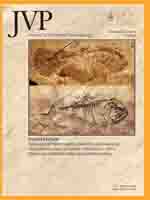A fragmentary coracoid as well as isolated ulnae, carpometacarpi, and tarsometatarsi from the Varswater Formation at Langebaanweg, South Africa (early Pliocene), can be assigned to a new genus and species of true woodpecker (Picidae, Picinae), Australopicus nelsonmandelai, gen. et sp. nov. The new taxon is the first documented pre-Pleistocene record of woodpeckers from the entire African continent and it is clearly distinct from the three extant lineages of Picinae that are endemic to sub-Saharan Africa, i.e., Campethera-Geocolaptes, Dendropicos, and Dendrocopos obsoletus. Our phylogenetic analysis shows that the new taxon forms a clade with the extant woodpecker genera Celeus and Dryocopus, which do not occur in Africa, but in the Americas and Eurasia. The new taxon represents a previously unknown fourth lineage of African woodpeckers of Eurasian origin that probably became isolated on the African continent as a result of environmental changes during the Miocene. Evidence for an arboreal true woodpecker in the fossil record strongly supports previous hypotheses regarding the presence of riverine forests at Langebaanweg during the early Pliocene.
How to translate text using browser tools
1 July 2012
Biogeographic and Paleoenvironmental Implications of a New Woodpecker Species (Aves, Picidae) from the Early Pliocene of South Africa
Albrecht Manegold,
Antoine Louchart
ACCESS THE FULL ARTICLE

Journal of Vertebrate Paleontology
Vol. 32 • No. 4
July 2012
Vol. 32 • No. 4
July 2012




